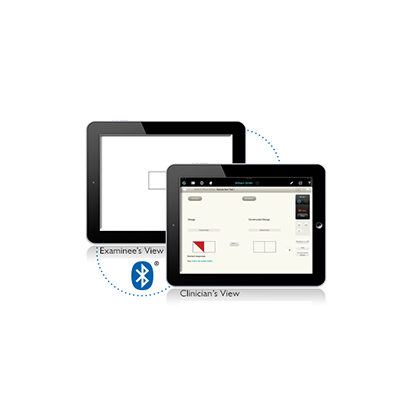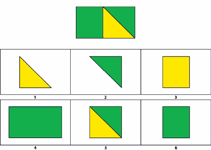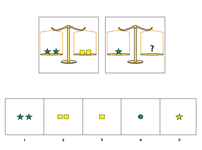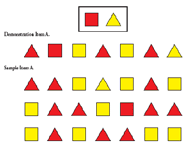David Wechsler
Age Range:Individuals 16:0-90:11
Administration:Pencil-and-Paper or web-based (Q-interactive)
Scoring Option:Q-interactive® Web-based Administration and Scoring, Manual scoring, Scoring Assistant® and Report Writer software
Completion Time:60-90 minutes for core subtests
Scores/Interpretation:FSIQ, Index scores, subtest level scaled scores
Report Options:Score Report, Client Report and Interpretive Report
Publication Date:2008
In recognition of emerging demographic and clinical trends, the WAIS IV was developed to provide you with the most advanced measure of cognitive ability and results you can trust when addressing the changing clinical landscape.
Responding to influencing factors:
Changing Demographics
- Updated normative data for ages 16-90 years
- Enhanced utility for older adults
Emerging Clinical Needs
- Additional tasks for improved clinical utility
- New clinical and validity studies
New Research in the Field
- New subtests and items
- Improved measures of Working Memory, Processing Speed, and Fluid Reasoning
Increase Caseload
- Reduced administration time to obtain composite scores
- Improved scoring rules
- Enhanced scoring software to assist in generating customizable reports
Features & Benefits
Five Revision Goals
- Expanded clinical utility
- Increased developmental appropriateness
- Enhanced user-friendliness
- Improved psychometric properties
- Updated structural foundations
Clinical utility
- New special group studies. Click here for a listing of all special group studies.
- Co-normed with the Wechsler Memory Scale®-IV. Click here for information on WMS-IV.
- General Ability Index (GAI) included
Increased developmental appropriateness
- More efficient administration time
- Added teaching items to ensure understanding of task
- Reduced vocabulary-level for verbatim instructions
- Reduced emphasis on motor demands and timed performance
- Enlarged visual stimuli
Enhanced user friendliness
- Reduced testing time by an average of 15%
- Revised instructions for clarity and consistency
- Redesigned record form
- Increased portability
- Expanded sample responses
- Simplified technical manual organization
- Included new clinically sensitive supplemental subtests
Improved Psychometric Properties
- Updated norms
- Improved floors and ceilings
- Expanded FSIQ range
- Improved subtest and composite reliability
- Reduced item bias
Updated structural foundations
- Transitioned from dual IQ to Index Score structure
- Consistency with WPPSI-III and WISC-IV
- Fewer Subtests yield FSIQ and 4 Index Scores (VCI, PRI, WMI, & PSI)
- New measure of fluid intelligence
- Developed new subtest to measure fluid reasoning (Visual Puzzles and Figure Weights)
- Enhanced measures of working memory
- Revise arithmetic to emphasize WM
- Revise digit span to emphasize WM (added Digit Sequencing)
- Retain auditory WM measures on WAIS, visuo-spatial WM Measures on WMS
- Improved measure of processing speed
- Reduce fine motor demands
- Included an additional supplemental subtest (Cancellation)
New Subtests
Visual Puzzles |
|
|
Which 3 of these pieces go together to make this puzzle?
|
Figure Weights |
|
|
Which one of these goes here to balance the scale?
|
Cancellation |
|
|
When I say go, draw a line through each red square and yellow triangle.
|
Click here to view and print the updated table
- Transitioned from dual IQ to Index Score structure to be consistent with the WPPSI-III and WISC-IV
- Yields FSIQ and 4 Index Scores with fewer subtests (VCI, PRI, WMI, & PSI)
- Includes General Ability Index (GAI)
- Renamed Perceptual Organization Index (POI) as the Perceptual Reasoning Index PRI)
- Redesigned and enhanced scoring and reporting software to improve ease of use and functionality
Software
WAIS IV Software
Save time scoring and reporting results with the practical WAIS–IV Scoring Assistant and Report Writer Software.
WAIS—IV Scoring Assistant – Just enter raw scores, and the software does the following:
- Generates concise score reports and statistical reports with graphs and tables.
- Raw to scaled score conversions
- Strength and weakness discrepancies
- Uses the PsychCorpCenter Platform as its foundation to integrate with other scoring applications and produce cross battery analysis of scores.
- Links to WMS-IV and WIAT-II
- Upgradeable to WAIS-IV Report Writer
- Click here to see enhanced user interface of the WAIS-IV Scoring Assistant
- Click here for a sample report from the WAIS-IV/WIAT-II Scoring Assistant
WAIS—IV Report Writer – Includes all capabilities of the Scoring Assistant plus:
- Produces individualized, comprehensive reports that go beyond mere scores, tables, and graphs.
- Non-Technical Client Report
- Comprehensive Narrative Report with narrative interpretations included.
- Clinical and Background Review
- Interprets statistically significant discrepancies between scores.
- Uses the PsychCorpCenter Platform as its foundation to integrate with other report writer applications and produce cross battery analysis of scores.
- Links to WMS-IV and WIAT-II.
- Includes comprehensive user manual.
- Click here for a sample report from the WAIS-IV Report Writer.
- Click here for a sample interpretive report from the WAIS-IV/WMS-IV Report Writer (male/21 years)
Two options for scoring and reporting the WAIS-IV are now available on Q-global.
The first option is to pay per-report. Customers who administer the WAIS-IV only a few times each year, or those who want the flexibility to pay only as the assessment is used, may prefer this option.
The second option is to select an “unlimited use” subscription, where one user of the WAIS-IV gets unlimited scoring and reporting for one, three, or five years depending on the selected term of the subscription. This may be a better option for customers who administer the WAIS-IV several times each year—and don’t want to worry about keeping track of their report expenses.
Q-global Unlimited-use Scoring Subscriptions
Two pricing options are now available for scoring and reporting on Q-global. In addition to the current per-report price, there is now an unlimited-use scoring and reporting subscription available in one-, three-, and five-year terms.
Important note: Each subscription is per user for the WAIS-IV only and will begin on the date of order processing unless otherwise requested.
Press Release
Aug. 28, 2008 – Wechsler Adult Intelligence Scale, Fourth Edition
Presentations
Wechsler Adult Intelligence Scale—Fourth Edition (WAIS–IV) (PDF – 174 KB)
Wechsler General Ability Index, GAI, Symposium (APA 2009) (PDF – 502 KB)
Materials
WAIS-IV Ad (PDF – 122 KB)
WAIS-IV Brochure (PDF – 787 KB)
Updates: Manual
Click here to view the update made to the WAIS-IV Technical & Interpretive Manual
-
WAIS-IV (Wechsler Adult Intelligence Scale®, Fourth Edition): Overview
This pre-recorded 20-30 minute session allows you to learn at your leisure. All you need is access to the Internet and the sound enabled on your computer. Please keep in mind that the session may take a few minutes to load.
This session provides you with essential information regarding the features of the WAIS-IV. You will learn about some of the key differences between the WAIS-III and WAIS-IV, including examples of new subtests. This session is designed for clinicians that have not yet purchased the WAIS-IV, or those who have purchased and want to gain an overview prior to reading the manuals or attending a webinar.

Pre-recorded Webinars
-
Advanced Interpretation of the WAIS-IV and WMS-IV
Presenter: Gloria Maccow, PhD

This hour-and-a-half long webinar will focus on interpretation of the data from the WAIS-IV and WMS-IV. The presenter will use data from the assessment instruments to describe strengths and needs in reasoning ability and memory. The data will be linked to the demands of the individual’s functional environment in an effort to identify appropriate interventions.
This webinar is designed for clinicians who are familiar with the administration and scoring of WAIS-IV and WMS-IV subtests.
Date: Sep 13, 2011
-
Overview of the Wechsler Adult Intelligence Scale-Fourth Edition (WAIS®-IV)
Presenter: Gloria Maccow, PhD

Intended for use with individuals ages 16 to 90 years, the WAIS®-IV measures cognitive ability using a core battery of 10 unique subtests. The subtests focus on four specific domains of intelligence: verbal comprehension, perceptual reasoning, working memory, and processing speed. The WAIS®-IV is based on recent research in the area of cognitive neuroscience and the theories and work of David Wechsler PhD, who is recognized as one of the most influential and respected psychologists of the 20th century.
During this webinar, the presenter will describe administration and scoring of the subtests and basic interpretation of the results.
Date: Sep 07, 2011
-
WAIS-IV and WIAT-III for College Students
Presenter: Amy Gabel, PhD

During this webinar we will describe how clinicians use the WAIS-IV and WIAT-III in the evaluation of college students. A case example will be provided.
Date: Apr 11, 2011
-
Administration, Scoring, and Basic Interpretation of the WAIS-IV
Presenter: Gloria Maccow, PhD

This two hour session will focus on the interpretation of the WAIS-IV, using the Index, GAI, and process scores. A portion of the time will be spent on guidelines for interpreting differences between Index scores and within them, as well as using the WAIS in comparisons with other types of data.
Date: Mar 31, 2011
Questions
Frequently asked questions follow. Click on a question to see the response.
Test Framework and Revisions
-
How is the WAIS–IV FSIQ different than the WAIS–III FSIQ?
-
The VCI and the PRI are derived from three subtests. Are these as reliable as the WAIS–III VIQ and PIQ were?
-
Can I substitute the supplemental subtests for a core subtest?
-
Can I give all the core and supplemental subtests and choose to use the highest subtest scaled scores when computing composite scores?
-
Was the WAIS–IV designed to line up with CHC theory?
-
Why was Picture Arrangement dropped?
-
Why was Object Assembly dropped?
-
Why was Information chosen as a core subtest over Comprehension?
-
Why was a third task—Digit Span Sequencing—added to the Digit Span subtest?
-
Why was Arithmetic chosen as a core subtest over Letter–Number Sequencing?
General Administration and Scoring
-
Do we have to wait for General Ability Index (GAI) tables to be generated by outside researchers? Which tables are endorsed by Pearson?
-
Why are some 0-point or 1-point responses on the verbal subtests not queried?
-
Why were the discontinue rules shortened from the WAIS–III?
-
What is the rule of thumb for clinical significance in base rates?
-
What scores do I use if I want to do a discrepancy analysis?
Clinical and Special Group Performance
-
Why are the clinical studies in WAIS–IV different than those in WAIS–III?
-
Why is reliability lower for the intellectually gifted and the intellectually disabled (formerly referred to as mental retardation) special group samples than for the normative sample?
-
Are there profiles typical of clinical disorders?
-
Do examinees with neuropsychological or learning issues score lower on WMI and PSI?
-
I retested a gifted examinee using the WAIS–IV and the scores were lower than previously reported on the WAIS–III. Why is this?
-
To meet my state’s cognitive requirements for a diagnosis of intellectual disability (formerly referred to as mental retardation), the VIQ, PIQ, and FSIQ scores must all be below 70 points. How do I do this with WAIS–IV, which no longer has the VIQ and PIQ composite scores?
-
I work in an area where many different languages are spoken. What do I do if an examinee has recently immigrated to the United States and needs to be assessed in a language other than English?
Subtest Administration and Scoring
-
Why are Letter–Number Sequencing, Figure Weights, and Cancellation not administered to ages 70–90?
-
Why was Block Design selected as the first subtest for WAIS–IV?
-
If you wanted to reduce the effects of speeded performance, why not eliminate time bonus points from Block Design altogether?
-
Why do Visual Puzzles and Figure Weights have strict time limits, and Matrix Reasoning only has a 30 second guideline?
-
Why is Digit Span placed so early in the subtest order?
-
In the Letter–Number Sequencing subtest, the examinee is instructed to repeat the numbers in ascending order first, and then the letters in alphabetical order. For Items 3–10, why is credit awarded if the examinee repeats the letters first in order and then the numbers in order?
-
What should I do if an examinee writes too faintly to be seen through the Cancellation scoring template?
-
Is color-blindness a factor on the WAIS–IV?
Related Instruments
-
Was the WAIS–IV co-normed with the WMS–IV, as it has been with previous editions?
-
When will the WMS–IV be available?
-
Will scoring and reporting software be available for use with the WAIS–IV and WMS–IV?









